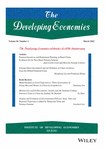
Financial Access in Post-Reform India
This study focuses on the state of financial access in post-reform India. It is analysed from the macroeconomic growth perspective keeping in view the importance of rapid growth for the Indian economy and the fact that majority of production organizations especially in the unorganized segment are yet to have access to the formal financial system. Financial access is considered in terms of actual use of one of the financial services, that is, supply of financial resources for productive investment purpose. The study measures financial access in terms of availability of finances from the formal financial institutions and their adequacy in taking care of productive investment needs. Adequacy of finances is assessed through financial resource gap, that is, proportion of productive investment that is not funded by the formal financial institutions. Availability and adequacy of resources from the formal financial system is analysed at different levels of aggregation: household, sector (agriculture, industry and services), segment (unorganized and organized), and economy. Industry and services sectors are divided into organized and unorganized segments given their differential access to the formal financial system and financial access is computed separately for the two segments. In addition, the study compares India with selected countries (Brazil, China, and United Kingdom) and within India it compares private sector banks with public sector banks. Finally, it provides policy recommendations.
Find on this page
Contact Us
Institute of Economic Growth, University Enclave, University of Delhi (North Campus),
Delhi 110 007, India
system@iegindia.org
+91-11-27666364/6367, 27667101/7288/7365/7424
+91-11-27667410



